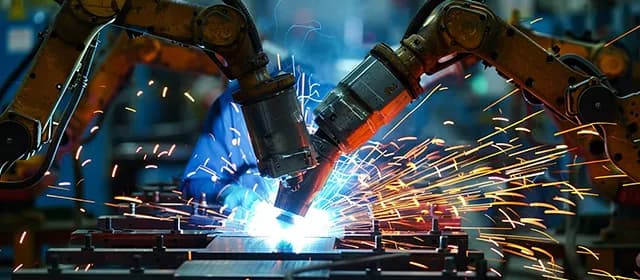The oil and gas industry holds immense importance as it helps meet a significant portion of the world's energy demand. In this space, oil & gas pipelines play a vital role behind the scenes by carrying required lubricants, oils, or gas supplies for industrial operations. It fuels various sectors, including transportation and electricity generation, by becoming a medium of required material delivery. So, let's dive in and explore more about it.
Understanding the Oil & Gas Pipeline
Oil and gas pipelines are the pipe structures used to transport specific oil or gas from one location to another. They typically transfer crude oil, natural gas liquids, and refined petroleum products. These pipelines form an extensive network that connects production areas to refineries, storage facilities, and distribution stations. As they are heavily used in various industries, their demand in recent years has risen. According to Kings Research, the global oil & gas pipeline market is expected to be valued at $53.54 billion by 2030.
How Does an Oil & Gas Pipeline Work?
Oil and gas pipelines work through a network of interconnected pipes that transport various types of oil, liquids, and petroleum products. The process begins with the extraction of oil or gas from production wells. The gathered resources are then transferred through collecting systems to larger pipelines. These pipelines, known as transmission lines, move oil or gas over long distances, often across different regions or countries. The pipelines use pumps to maintain the flow and pressure of the products. They are connected to the pipeline network, allowing for the storage, processing, and distribution of the resources.
Types of Pipelines Used in Oil & Gas Transmission and Distribution
Below are some common types of pipelines used in the oil and gas industry to transfer and distribute specific materials.
- Crude Oil Pipeline
These pipelines are used to transport crude oil from production wells to refineries. They are responsible for moving the raw, unprocessed oil over long distances.
- Product Pipeline
Product pipelines carry refined petroleum products, such as gasoline, kerosene, jet fuel, and heating oil, from refineries to the market.
- Gathering Pipeline
Gathering pipelines are used to deliver oil or gas products from the source, such as wells, to processing plants or storage tanks.
- Transmission Pipeline
Transmission pipelines are responsible for moving oil or gas over long distances, often across different regions or countries. They include extensive distribution networks to transport natural gas, liquefied natural gas products, crude oil, and other lubricants.
- Distribution Pipeline
Distribution pipelines are utilized to distribute oil or gas products to consumers.
- Flowlines
Flowlines are pipelines that connect individual wells to gathering pipelines or processing facilities. They are used to transport oil or gas products from the wells to the gathering container.
4 Common Challenges in the Oil & Gas Pipeline Industry
Below are the most common challenges faced by pipelines used in the oil & gas industry:
1. Corrosion
Corrosion is a major challenge faced by gas and oil pipelines worldwide. It can lead to leaks, structural damage, and environmental hazards. To address this challenge, Apache Pipeline Products, an oil field equipment supplier, offers pipeline pigs for cleaning, maintenance, and inspection of pipelines. This solution helps prevent and mitigate corrosion in pipelines.
2. Aging Infrastructures
Many oil and gas facilities and pipeline networks are old and nearing the end of their operational expiry. Replacing and upgrading aging assets requires significant capital investment and meticulous planning. To mitigate this challenge, Gulf Coast Pipeline Services provides turnkey services to the pipeline owner/operator community. It includes construction, welding, fabrication, mowing, weed control, leak detection, pig tracking, and other types of services.
3. Environmental Impact
The oil and gas industry faces increasing pressure to reduce its environmental impact and carbon footprint. To address this challenge, the Environmental Defense Fund (EDF) works to reduce the environmental risks associated with oil & gas production. It focuses on reducing methane emissions, improving air quality, and promoting sustainable practices in the industry. It also advocates for strong regulations and policies to protect the environment and public health.
4. Safety and Security
Ensuring the safety and security of gas & oil pipelines is crucial. Cybersecurity threats pose a serious risk to pipeline operations. Pipeline operators can address this challenge by implementing robust cybersecurity measures, conducting regular risk assessments, and investing in advanced monitoring and surveillance systems.
Safety Regulations and Guidelines for Oil & Gas Pipelines in the U.S.
Take a look at some key regulatory bodies in the U.S. and their roles below:
- PHMSA
The Pipeline and Hazardous Materials Safety Administration's (PHMSA) Office of Pipeline Safety focuses specifically on the safety of natural gas and hazardous liquid pipelines.
- FERC
The Federal Energy Regulatory Commission (FERC) plays a vital role in regulating the oil and gas industry. It oversees the siting, construction, operation, and maintenance of interstate natural gas pipelines. FERC ensures compliance with safety standards and environmental regulations.
- EPA
The Environmental Protection Agency (EPA) sets standards and guidelines for the petroleum refining and distribution industry. It develops regulations under the Clean Air Act and other environmental laws to reduce emissions and protect air and water quality for petroleum refineries.
- State Regulatory Agencies
U.S. states have their own government agencies and commissions responsible for regulating the oil and gas industries within their jurisdictions. These agencies often have authority over pipeline transportation that occurs solely within the state.
Bottom Line
The oil and gas pipeline plays a vital role in the transportation of energy resources across vast distances. Various types of pipelines for distribution and transmission ensure the safe and efficient transmission of liquid lubricants or gas to the desired location.
However, it faces numerous challenges that require constant attention and innovative solutions. From corrosion control to aging infrastructure, environmental impact to safety and security, these challenges demand the industry's commitment to sustainability, safety, and regulatory compliance.
With regulations and guidelines by government bodies in the U.S., pipeline operators can ensure the reliable and efficient delivery of oil and gas resources. Overall, pipelines used in the oil and gas industry serve as a vital component in ensuring the safe transfer and distribution of delicate materials.

.webp)


